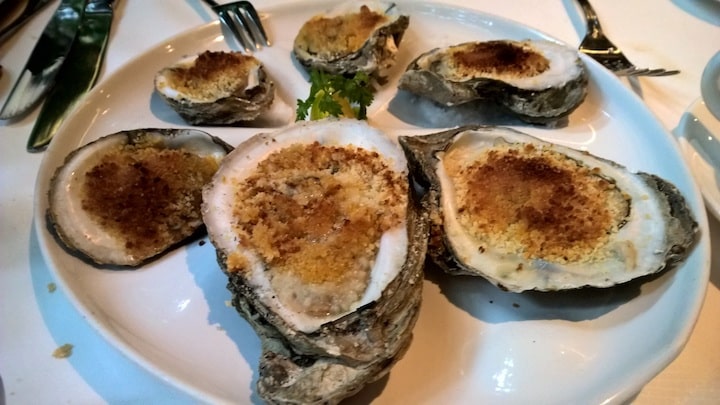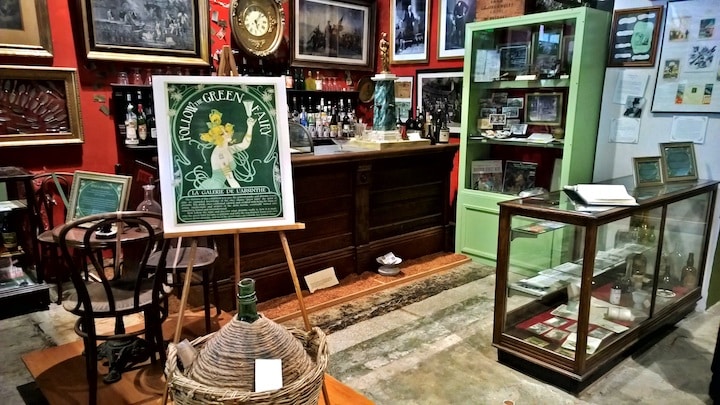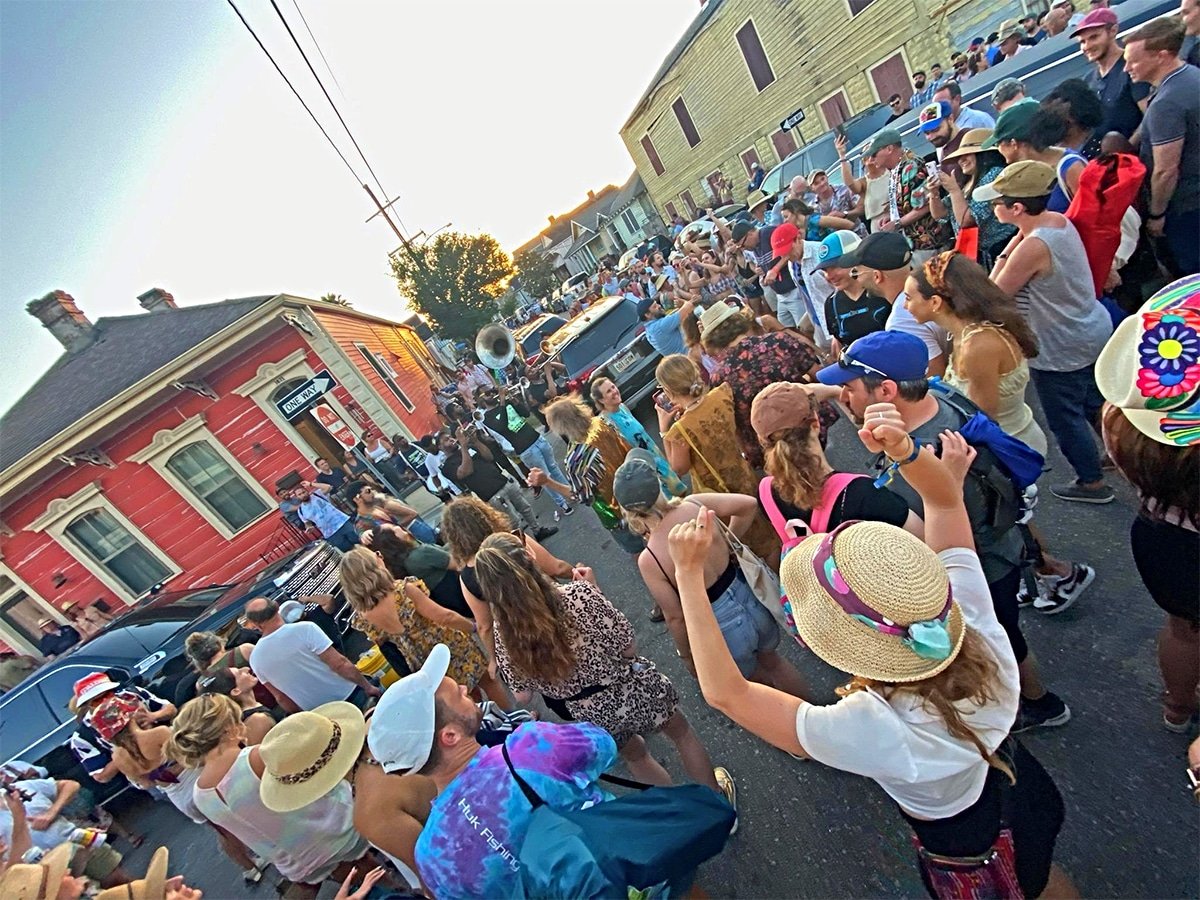
This is the first post in Dave Zuchowski’s three-part series on New Orleans.
It wasn’t until I arrived in New Orleans the first week of December that I discovered the Big Easy is celebrating its Tricentennial in 2018.
Long known for “letting the good times roll,” the Crescent City should be even livelier this year as its residents have even more reason to party and make merry. Maria White of the city CVB told me that there won’t be one big celebratory even; rather, the Tricentennial will extend throughout the year and many of the city’s annual events. During Mardi Gras, which begins on February 13 this year, the oldest krewe in town—the Krewe of Rex—will feature the 300th anniversary in its parade floats. Elsewhere, the popular New Orleans Jazz & Heritage Festival (April 27-May 6) will close with a fireworks display, and the New Orleans Wine & Food Experience (May 23-28) will incorporate some Tricentennial themes into its programming.
It’s a good year to visit, simply put. In the first installment of my three-part New Orleans series, it’s all about food. Here are ten things to know about New Orleans Cuisine:

1. New Orleans cuisine has its roots in several different cultures
The early Cajuns, descendants of the Acadians, were moved by force from their homes in Canada’s maritime provinces in the 18th century to southern Louisiana. They relied heavily on local ingredients and game in preparing their meals. Creoles, descendants of upper-class French and Spanish settlers of colonial Louisiana, have made their own contributions, as did African-Americans in the form of soul food. In more modern times, immigrants from all over the world have also contributed to the unique culinary mix that is New Orleans cuisine.
New Orleans’s location along the Mississippi and proximity to the Gulf of Mexico means fish and shellfish, both fresh and salt water, have also played a big role in the city’s culinary history. Since the city’s founding, residents of various nationalities have tapped into its cornucopia of crab, oysters, crawfish, redfish, shrimp, red snapper, pompano, turtle, and more.
2. There’s a difference between Cajun and Creole cuisines
Both have their roots in French cuisine and cooking techniques, on which both built by incorporating ingredients such as hot peppers and filé (a spice borrowed from the Choctaw Native Americans). Cajun food is country-based, while Creole cuisine is more urban and refined.
Creoles rely much more heavily on the tomato than do the Cajuns. That’s why you’ll typically find it in Creole jambalaya but not the Creole version. Furthermore, Creole gumbo is usually more stew-like, while Cajun gumbo is soupier. Those familiar with the cooking shows of The Food Channel featuring Emeril Lagasse are already familiar with the “holy trinity”: onions, peppers and celery. These are basic ingredients in Cajun cooking.
In general, Cajuns tended to live off the land and incorporated what they grew, hunted or caught in nearby waters into their cooking. On the other hand, city-dwelling Creoles had access to markets with their wider variety of ingredients including dairy products and butter.

3. Basic New Orleans culinary ingredients include…
Gumbo, one of the city’s classic dishes, is named for the Bantu word for an ingredient common in the region: nkombo, which is Bantu for okra. Other important elements in New Orleans cuisine include filé (dried sassafras leaves), hot sauce, rice and beans, corn bread, grits, hominy, shellfish, seafood, alligator, tomatoes, Creole mustard, buodin sausages, and New Orleans versions of French bread, figs, olives, and strawberries, which grow like wild in the region.
4. Traditional New Orleans foods include…
Start the morning with a beignet, a sweet, fried dough treat covered with powdered sugar. For lunch try some gumbo, okra stew made with either seafood or chicken and andouille sausage, another local product. Or try a Po-Boy, a hoagie-style sandwich made with crispy bread with a fluffy interior that’s filled with a meat (preferably beef) or seafood of choice. Sometime the Po-Boy is topped with fries and gravy as well as other ingredients of choice.
Another sandwich, the muffuletta, has an Italian pedigree. This huge cold-cut concoction was first made at Central Grocery & Deli and consists of a 10-inch round of Italian bread filled with cheese, cold cuts and assorted marinated vegetables. Got a sweet tooth? Try a praline, a fudge-like mix of pecans, sugar syrup and cream.
Similar to paella, jambalaya is a rice dish served with a mix of chicken, seafood, sausage, or all three plus some spice to kick it up a notch. Crawfish étoufée comes out of the Cajun kitchen and features this crustacean that is plentiful in and around New Orleans. Seasoned with the holy trinity, pepper and mushrooms, the dish is served over rice.

5. Bananas Foster is New Orleans’s most famous dessert
People go bananas for one of the city’s favorite desserts, created in 1951 by renowned restaurateur Ella Brennan and chef Paul Blange at Brennan’s in New Orleans. As tasty as it is flamboyant, bananas Foster was named for Richard Foster, chair of the city’s crime commission. Made from bananas sautéed in butter and brown sugar, flamed with banana liqueur and served over vanilla ice cream, the dessert is still going strong at its restaurant of origin and elsewhere.
6. Don’t forget New Orleans cocktails
Why Sazeracs aren’t more popular is a question that has always mystified me. First born at Peychaud’s Pharmacy on Royal Street, the cocktail is a potent mix of rye whiskey, simple syrup, absinthe, and bitters. A morning eye-opener, Brandy Milk Punch—a mix of cognac, milk, simple syrup, and vanilla—is a delightful part of the city’s culture. Another local cocktail attributed to the Imperial Cabinet Saloon on Gravier Street is the silky-textured Silver Gin Fizz, a combination of gin, cream, egg white, simple syrup, lime, and orange flower water.
7. The Southern Food & Beverage Museum is worth a visit
While not strictly limited to the culinary traditions of New Orleans, the scope of the museum’s collection extends to “the discovery, understanding and celebration of food, rink and related culture of the South.”
The 1912 building that houses the museum is itself an artifact, having once served as Dryades Public Market. Currently, 16 states are represented in 16 unique market stalls where certain iconic food-related items from each state are displayed. Hundreds of items run the gastronomic gamut, like whiskey barrels from Kentucky, dinner plates from the White House, a king cake from Louisiana, and Aaron Franklin’s barbecue smoker from Austin, Texas. Other exhibits focus on coffee, pralines, the port of New Orleans, and more. In the adjacent Toups restaurant, Cajun chef Isaac Toups features foods that encompass the food traditions of the South. During his appearance on Bravo’s Top Chef program, Toups took home the “Fan Favorite” prize. The museum also offers cooking classes, culinary camps for children, and beer-making and rum-tasting workshops.

8. The Museum of the American Cocktail is also worth it
Housed in the Southern Food & Beverage Museum at 1504 Oretha C. Haley Boulevard, the Museum of the American Cocktail exhibits all sorts of cocktail memorabilia and information, including the cocktail’s history and relationship to music art, theater, film, and politics around the world.
In addition to displaying the largest collection of absinthe paraphernalia in the country, the museum sports a bar from ancient Bruning’s Restaurant that was destroyed by Hurricane Katrina but is now restored, as well as a Crawley’s Imperial shaker, which can make 16 gin fizzes at a time and very early cocktail recipe books. Prohibition artifacts (a poster of Prohibitionist Carrie Nation and bottle openers in the shape of hatchets to mock her), stills, and moonshine jugs are just a fraction of the museum’s holdings. It’s open everyday (but Tuesday) starting at 11am, with cocktails served from the salvaged, historic bar.
9. The city has a culinary antique store
Lucullus, a unique store at 610 Charles Street in the French Quarter, has specialized in culinary antiques for nearly 30 years. Celebrating all things gastronomy from the 17th, 18th and 19th centuries, Lucullus’s inventory includes the expected silver, glass, ceramic, and metal kitchen and dining tools and equipage as well as furniture, food-themed paintings, and even old things for the garden and al fresco dining.

10. At Modernist Cuisine Gallery, food as art
Don’t just walk by the Modernist Cuisine Gallery at 305 Royal Street in the French Quarter. Step inside for a unique look at the food photographs by former Microsoft CTO and Stephen Hawking protégée Nathan Myhrvold. Along with gorgeous, magnified trompe l’oie renditions of tomatoes and Swiss chard, you’ll find action images of mustard splaying in the air and over a paper carton of French fries, a red wine caught in the midst of a spill, and a hamburger arranged like an “exploded diagram” used to assemble a just-bought item.
In part 2: A Short Guide to Where to Eat in New Orleans
For more information on New Orleans, visit neworleans.com or phone 800-672-6124.








Great Post, As we know New Orleans is a city for foodies with fine dining and historic cafes all around the city from the bustling French Quarter to the picture-perfect uptown Garden District.